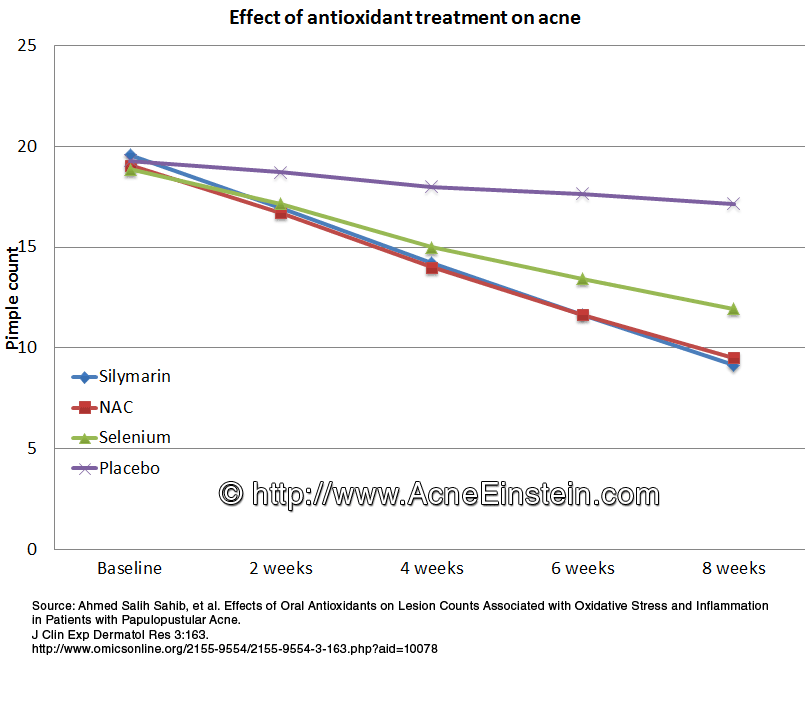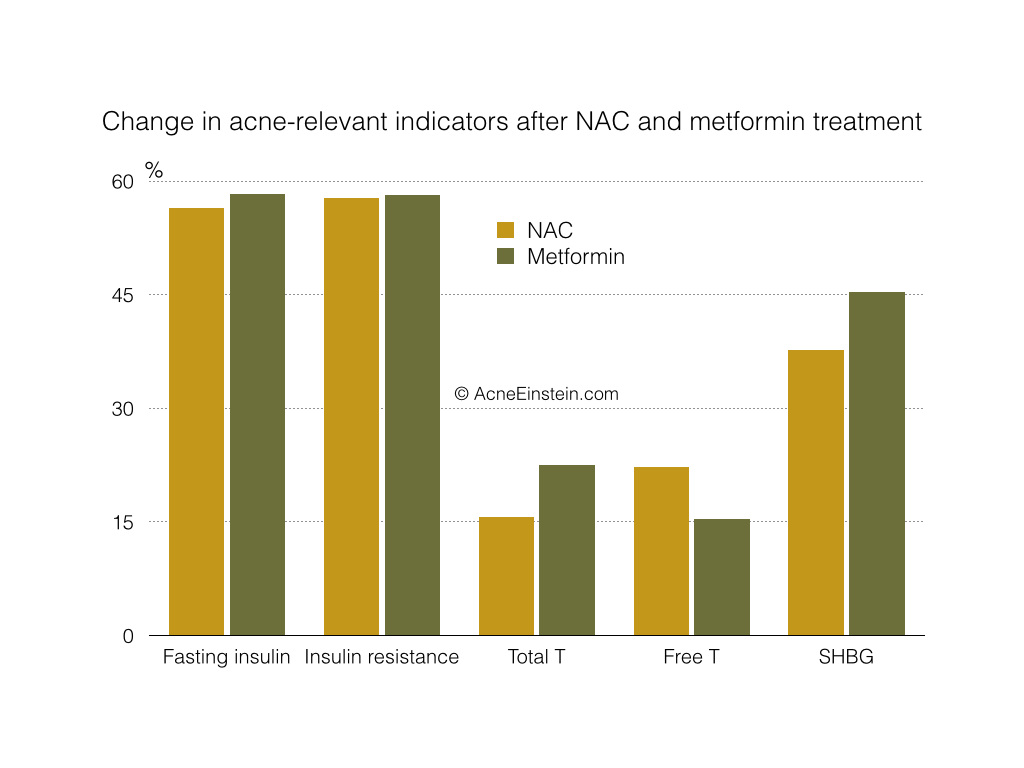N-Acetylcysteine (NAC) is a precursor to the potent antioxidant glutathione, and NAC supplementation leads to a powerful antioxidant effect.
Effect on acne
NAC is one of the few supplements that has been studied on acne patients. In a 2012 study, Iraqi researchers gave 58 acne patients either NAC, silymarin (milk thistle), selenium or placebo pills. This graph shows the total number of pimples in each group over time.

As you can see, there was roughly a 50% reduction in pimple counts in the NAC and silymarin groups.
This study also showed the antioxidant and anti-inflammatory effects of the supplements. The researchers measured various markers for inflammation and oxidative stress before and after the study. For example, malondialdehyde levels dropped by 39% in both the silymarin and NAC groups. Malondialdehyde is a form of free radical that’s formed when polyunsaturated fats suffer oxidative damage. Interleukin 8 (IL-8) is a marker of inflammation, and its levels dropped by 72% and 80% in the NAC and silymarin groups, respectively.
At the end of the study, there was no difference in the levels of inflammation and oxidative stress between healthy controls without acne and those in any of the three antioxidant supplement groups.
Here are the doses used in the study:
- NAC: 1200mg/day
- Silymarin: 210mg/day
- Selenium: 200mcg/day
Hormone balancing effects
NAC has been investigated as a potential treatment for PCOS. A recent systemic review compared the effectiveness of NAC to metformin (prescription anti-diabetes drug) on women with PCOS. They concluded that NAC is as effective as metformin. This graph shows the results from one study. The graph is plotted in a way that positive values mean improvements.

Source: Oner, G. & Muderris, I. I. Clinical, endocrine and metabolic effects of metformin vs N-acetyl-cysteine in women with polycystic ovary syndrome. Eur. J. Obstet. Gynecol. Reprod. Biol. 159, 127–31 (2011). https://www.ncbi.nlm.nih.gov/pubmed/21831508
While metformin had a slight edge over NAC on most parameters, both treatments proved effective in reducing the acne-relevant hormones.
Caveat about NAC
NAC might not work as well as the insulin-reducing supplements for women who aren’t insulin resistant. One study showed no improvements in PCOS patients who weren’t insulin resistant.
Dosage
Most studies I looked at used a daily dose of 1800mg, given in 3 separate doses (3 x 600mg).
Safety and side effects
By all accounts, NAC appears to be safe in the doses used in the studies. None of the studies reported moderate or serious side effects. Mild side effects, like nausea, was reported occasionally.
However, there are no long-term studies on the safety of NAC supplementation. And I don’t recommend taking NAC for more than six months at a time.
The NYU Langone Medical Center website had this to say about the safety of NAC.
Safety Issues
NAC appears to be a very safe supplement when taken alone, although one study in rats suggests that 60 to 100 times the normal dose can cause liver injury. 45
As mentioned above, the combination of nitroglycerin and NAC can cause severe headaches. Safety in young children, women who are pregnant or nursing, and individuals with severe liver or kidney disease has not been established.

